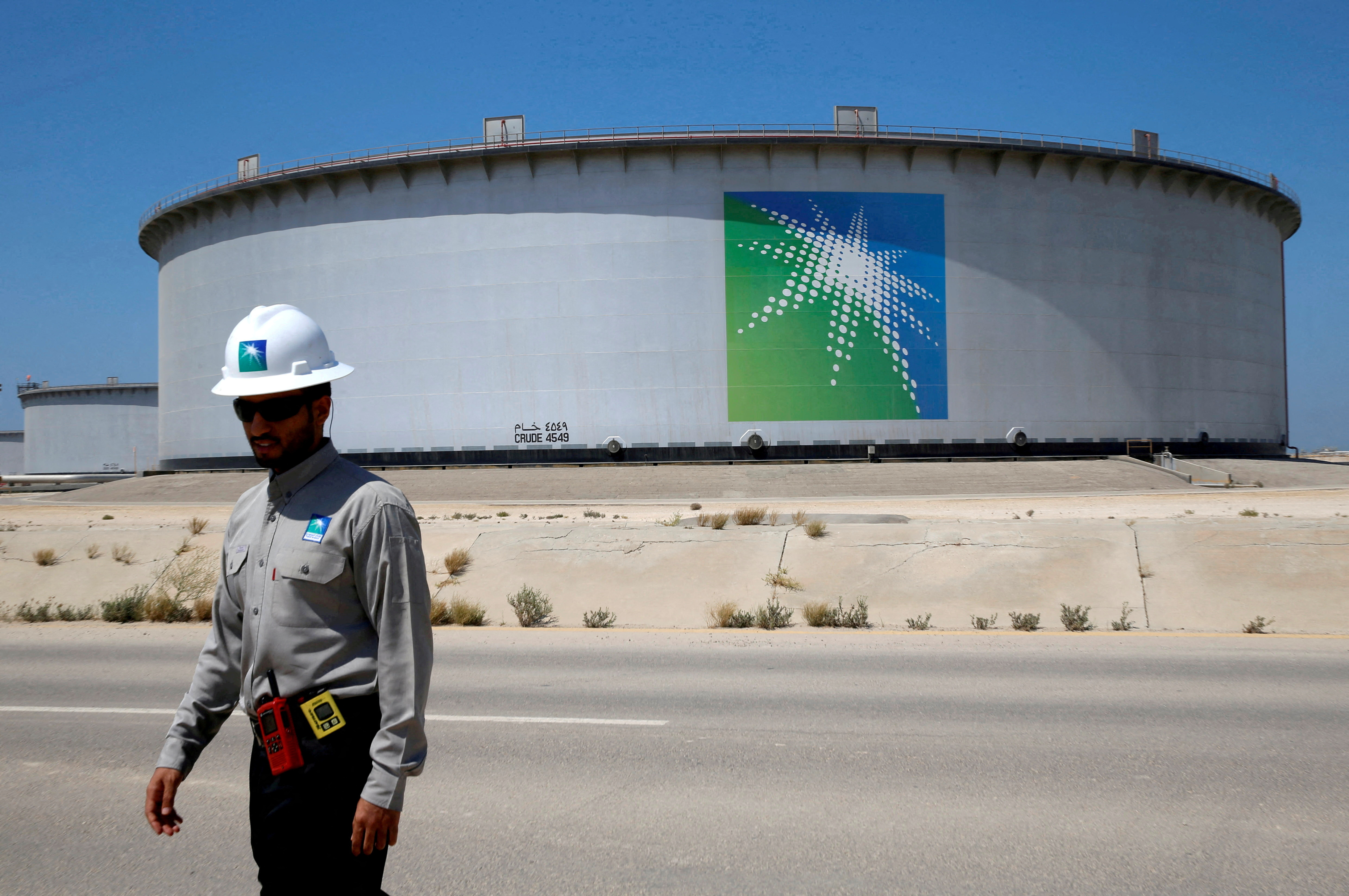

An Aramco employee walks near an oil tank at Saudi Aramco’s Ras Tanura oil refinery and oil terminal in Saudi Arabia May 21, 2018. REUTERS/Ahmed Jadallah/File Photo Acquire Licensing Rights
Sept 29 (Reuters) – Oil prices settled 1% lower on Friday due to macroeconomic concerns and profit taking, but rose about 30% in the quarter as OPEC+ production cuts squeezed global crude supply.
Front-month Brent November futures settled down 7 cents to $95.31 per barrel at the contract’s expiry, up about 2.2% in the week and 27% in the third quarter. The more liquid Brent December contract was settled down 90 cents to $92.20 per barrel.
U.S. West Texas Intermediate crude (WTI) settled down 92 cents to $90.97, up 1% in the week and 29% in the quarter.
With oil futures inching closer to $100 a barrel, many investors took profits on the rally given ongoing macroeconomic concerns.
“WTI has been the belle of the ball, but today it’s losing its luster,” said John Kilduff, partner at Again Capital LLC in New York, citing profit taking and economic concerns.
Oil and gas activity in three U.S. energy producing states has been rising with the latest jump in prices, according to a survey by the Federal Reserve Bank of Dallas.
In July, U.S. crude production grew to its highest since November 2019, according to data from the Energy Information Administration.
Investors looked ahead to a potential partial U.S. government shutdown on Sunday, an “unnecessary risk” to a resilient U.S. economy, top White House economic adviser Lael Brainard said.
Worries about the Chinese economy also intensified as shares of indebted property developer Evergrande Group (3333.HK) were suspended until further notice following a report that its chairman had been placed under police watch.
The U.S. oil and gas rig count, an early indicator of future output, fell by seven to 623 in the week to Sept. 29, the lowest since February 2022, energy services firm Baker Hughes (BKR.O) said in its closely followed report on Friday.
While the total rig count fell by 51 in the third quarter, the cuts have slowed compared with a reduction of 81 in the second quarter as oil prices have rebounded due to tightening supplies.
Brent is forecast to average $89.85 a barrel in the fourth quarter and $86.45 in 2024, according to a survey of 42 economists compiled by Reuters on Friday.
The OPEC+ ministerial panel meeting will take place on Oct. 4 and there is “increasing probability the voluntary supply cuts by Aramco are reduced,” National Australia Bank analysts said in a client note, referring to Saudi Arabia’s state oil producer.
The supply cuts announced by Saudi Arabia and Russia are expected to dominate oil prices for the remainder of this year.
However, a run towards $100 per barrel could be short-lived because of “the artificial nature of supply shortages in the system, and the fragile macro environment”, said Suvro Sarkar, energy sector team lead at DBS Bank.
Additional reporting by Robert Harvey, Katya Golubkova; Editing by Sonali Paul, Mark Potter, Paul Simao, Jan Harvey and David Gregorio
Our Standards: The Thomson Reuters Trust Principles.
Reports on oil and energy, including refineries, markets and renewable fuels. Previously worked at Euromoney Institutional Investor and CNN.